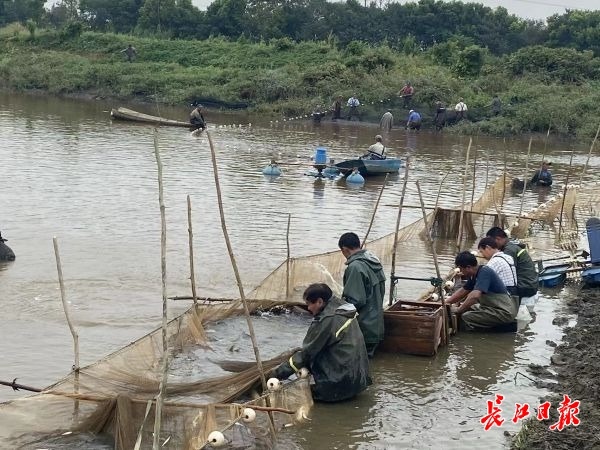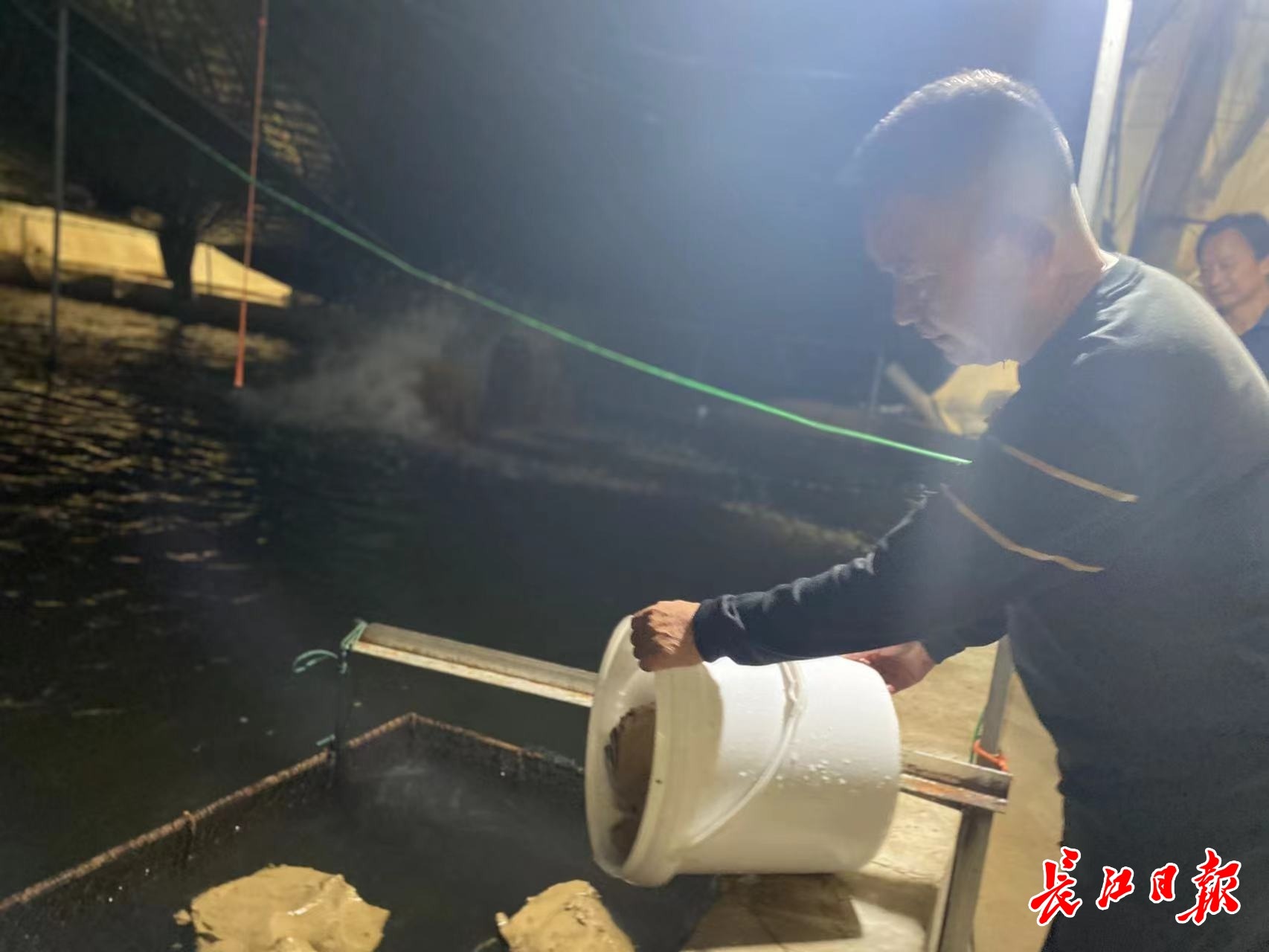90 % of this eel breeding base in Wuhan exports overseas
Author:Changjiang Daily Time:2022.09.25
The Yangtze River Daily Da Wuhan Client September 25 (Reporter Cai Xinxing Correspondent Li Jia) Recently, after sorting in the fish pond cage, 20 tons of eels from Wuhan Keyang Biological Engineering Co., Ltd. ( It is called the "Koyo Bio") Eel breeding base is transported out and sent to a grilled eel factory in Fujian, and then sold to overseas after processing. It is reported that Koya, which has been breeding eel for nearly 20 years, is currently the only eel breeding base in Wuhan. Ninety percent of its eels are sold to Japan, South Korea and other places in different forms.

The staff sorted eels in the Yutang cage. Reporter Cai Xinxing Photo
The reporter from the Yangtze River Daily saw that more than a dozen workers stood along more than 30 meters long cage to sort the fish in the cage: eat algae white catfish and flower catfish back to the fish pond , Leave an adult eel to salvage ashore. The director Chen Xiaochun introduced that these eel varieties are Japanese eels, which have strong disease resistance, but eel seedlings are more expensive. At present, 4,000 tails can be cultivated per acre of fish ponds. Through the nourishment method, catfish can eat algae in the water to keep the water cleansing, which is conducive to eel growth.

The staff is feeding the eel seedlings. Reporter Cai Xinxing Photo
"Eel seedlings are also called 'soft gold', because the price is expensive, there is a certain threshold for breeding, and the technical requirements for breeding are relatively high." Chen Xiaochun said that eels are one of the most expensive varieties in freshwater fish. Sex fish grows in fresh water, but to return to the sea in the sea. Since there is no artificial incubation technology for eel fry, eel seedlings must rely on fishermen to fish out of sea. "The newly caught eel seedlings are as thin as toothpicks. When the most expensive, the fry is sold for more than 30 yuan."

Eel seedlings are eating. Reporter Cai Xinxing Photo
Because of this, the survival rate of eel fry is the key to breeding eel. Not far from the open -air fish pond, it is the eel seedling indoor cultivation base of Koya. The eel seedlings that have just been purchased have six or seven thousand tails per kilogram. When the cultivation pond is growing to 50 to 100 tails in one kilogram, it will be put into the fish pond. In the two months of indoor cultivation, personnel need to be on duty for 24 hours.
At 5 pm, it was the second time to feed the eel fry in the day. In the black paint -lacquer cultivation pool blocked by the black film, there was only the sound of the waterwheel constant operation. Suddenly a white light turned on, attracting the eel fry in the pond to quickly gather to the edge of the pool. The staff immediately stirred the stirring. The mud -shaped feed was poured into the pool, and the eel seedlings gathered together to eat. With the lightness of eel, this feeding method can ensure that the eel fry can be eaten to the greatest extent.
Ruan Yibing, the person in charge of Keyang Bio, has been engaged in the aquatic industry in Guangdong for many years. The experience accumulated in the past 20 years has made him pay special attention to the details of the fry. The windmills in the pond water are used for oxygen to increase and ensure water circulation, and it must be operated 24 hours; the temperature of the pool water must be stable at about 29 degrees Celsius. To this end, the heating pipe is installed in the cultivation of the pool; The feeding time interval is 12 hours; there is a automatic control system for water in and drainage, and the water quality will be immediately reported to the police.
"Initially, the survival rate of eel fry was only 60%. After so many years of detours and continuously accumulated experience, the survival rate of the fry was increased to 99%." Ruan Yibing said Then gradually transition to fresh water. In order to ensure the healthy eel and no agricultural residues, the medicine cannot be used at will during the growth process. If there is a disease, probiotics or Chinese medicine are generally used for treatment. "However, it is the most important thing to do a good job. As long as the quality of water quality can be guaranteed, the chance of disease will be small."
At present, the eel output of eels of Koya is around 200 tons, of which 90%are sold to Japan, South Korea, the Americas and other places; some are also supplied to the aquatic markets in coastal areas.
According to Ruan Yibing, in addition to the indoor eel fry, they are currently exploring the use of indoor pools for high -density eel farming. This can not only save resources, but also increase production through refined control.
[Edit: Deng La Xiu]
For more exciting content, please download the "Da Wuhan" client in the major application markets.
- END -
[Health Hall] Broadcast "Guardian Silver Hair Memory" at 17:25 today

expertTian Jinzhou: Academician of the Chinese Academy of EngineeringJieheng Levy:...